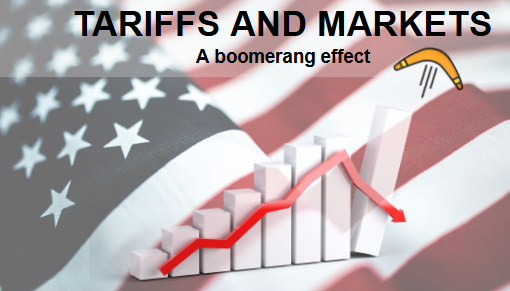LONG-LIFE AND CANNED FOODS: Potential and Accessibility to the US market
Published by Valeria Minasi. .
United States of America Food&Beverage Made in Italy Marketselection International marketing Market AccessibilityIn recent years the US market reports for canned and long shelf life foods an increasing growth of both demand and imports, the relevance of premium segments, and a favourable outlook in the medium term.
The ranking formulated by ExportPlanning, covering a food basket category including canned and long shelf-life foods1, shows the United States at the first place for potentiality in the world, as regards values and forecasts of imports, market dimension and relevance of the High and Medium-high price ranges.
Export potential of Long shelf-life and Canned Foods: Top markets worldwide
(scores, min=0/max=100)
| # | Market |
Demand Size | Import Values | Premium Ranges | Import Forecast |
|---|---|---|---|---|---|
| 1 | United States | 100 | 100 | 91 | 99 |
| 2 | France | 100 | 99 | 87 | 98 |
| 3 | Germany | 100 | 100 | 73 | 100 |
| 4 | Japan | 100 | 100 | 69 | 100 |
| 5 | United Kingdom | 100 | 100 | 65 | 99 |
| 6 | Canada | 98 | 98 | 74 | 91 |
| 7 | Italy | 95 | 92 | 89 | 88 |
| 8 | Netherlands | 100 | 99 | 51 | 97 |
| 9 | Belgium | 95 | 93 | 71 | 86 |
| 10 | Spain | 94 | 92 | 58 | 91 |
In 2019, the value of US imports of the aforementioned basket of long-shelf-life food and canned food reached a a new record value, close to €8 billion, at levels almost double those of the beginning of the decade. The value of the U.S. market - measured in terms of apparent consumption - is estimated to have exceeded €12 billion in 2019.
Last year, the US import of these high-end and mid-high end products exceeded the threshold of 2.3 billion last year, compared to levels of less than €1 billion at the beginning of the decade.
In the 2020-2023 forecast scenario, even taking into account the effects of the current pandemic, it is estimated that a total increase of more than €1.3 billion in US market imports of long-life and canned food (with an average annual growth rate of +4% in euro values).
Anyway, there are certain restriction with regard to the US market accessibility to consider in exporting long shelf life and canned foods. These restrictions are both general, related to food in general, than specific, related to these type of foods.
US Market Accessibility for LONG SHELF-LIFE AND CANNED FOODS
General elements for Accessibility
The rules on food import in the US is managed and regulated by three different Government Departments: USDA, HHS (of which FDA -Food & Drug Administration- is a part) and DHS.
These bodies regulate the necessary documents to present to the Port of Entry: together with the goods, it is always necessary to specify its category together with the number of pieces, weight, dimensions, product value and its description.
A proper packaging of the products intended to export is useful to avoid delays and adjunctive costs. Failure to comply with and/or any violation in the rules of product labelling, in particular about the mandatory indication of the nation of origin, may result in delays in the process of importing and strong sanctions which could culminate with the freezing of property and the product destruction2.
On June, 12th 2002, the “Public Health Security and Bioterrorism Preparedness and Response Act” has been passed in the USA; also known as “ Bio-Terrorism Act” or BTA, it requires the registration of all food facilities by the FDA. The process of registration requires the creation of a new account, at the end of which an account ID and a password are allocated. When a new user is registering by the FDA, it is necessary to indicate an agent, representing the company in the US market to avoid the denial of entry for the goods exported.
In January 2011, the draft law for the modernization of the food security to better protect public health and safeguarding food security (FSMA) was signed. For the first time, also the importers are explicitly allowed to verify that foreign suppliers carry out regular controls to make it certain that their food is safe.
Specific elements for Accessibility
About the category of canned foods, in glass or tinned, to export in the United States, it is mandatory the FCE (Food Canning Establishment) registration to the FDA. The FCE registration is carried out online. Together with the FCE registration, it is necessary to obtain a prior authorisation to import (SID). The authorisation examines the sterilization process of the product. We suggest to fully comply with the procedure required to avoid that FDA rejects or stop the import in the United States of the foods related to this registration.
Depending on its content and on how it is transformed and packed, certain foods are named “Low Acid Canned Foods” (LACF) or “Acidified Foods” (AF). A low acid canned food is a food product (wine and alcohol excluded) with a final balance of PH of above 4.6 or with an “activity water” of above 0.854. An acidified food is a product with a naturally pow acidity but with a final balance of ph reduced by acidifying.
The list of additives approved is included in the EAFUS list of the FDA.
The specific rules included in the Title 21 of the USA Code related to each substance in the EAFUS list are specify in the column at the right of the list.


